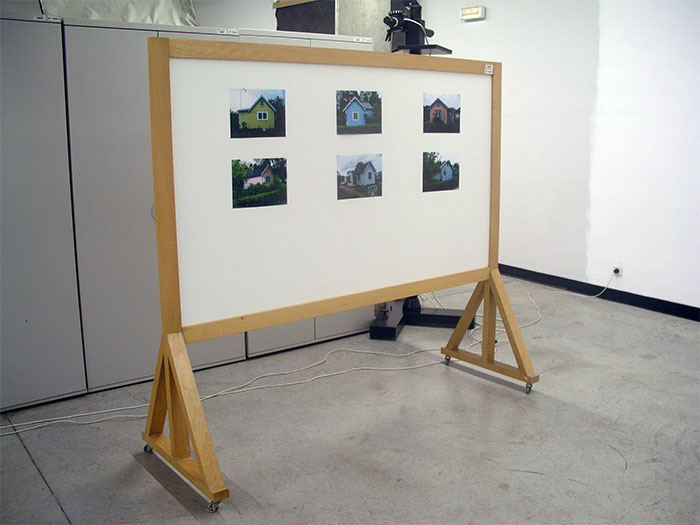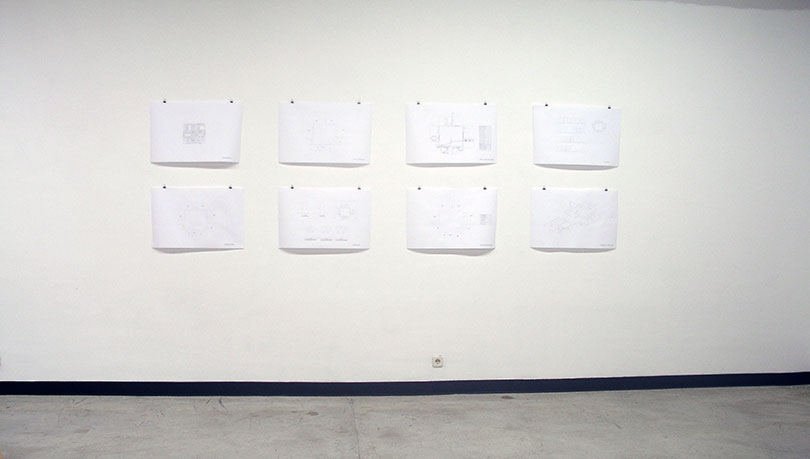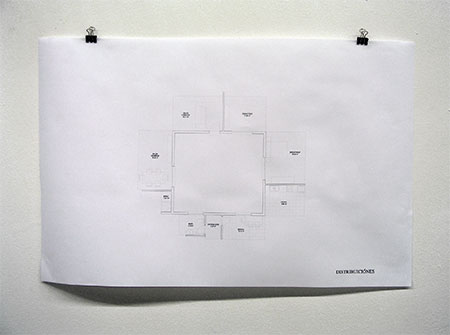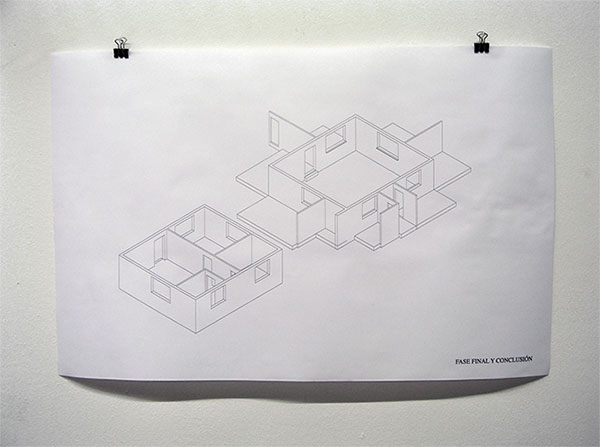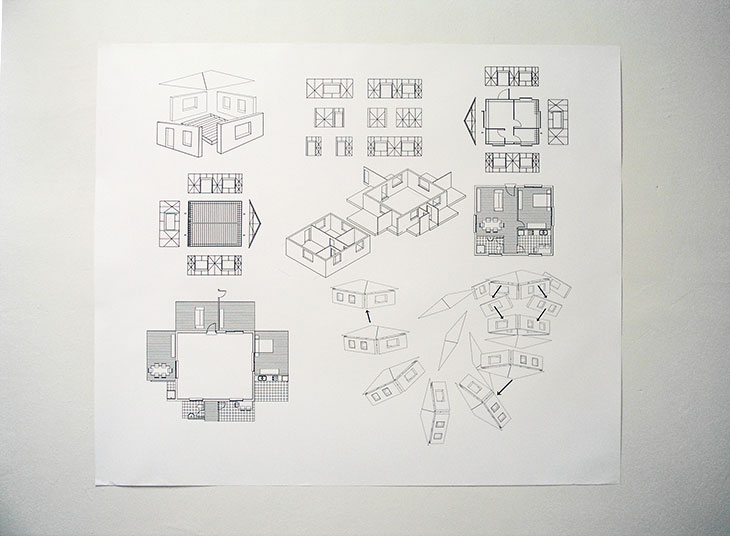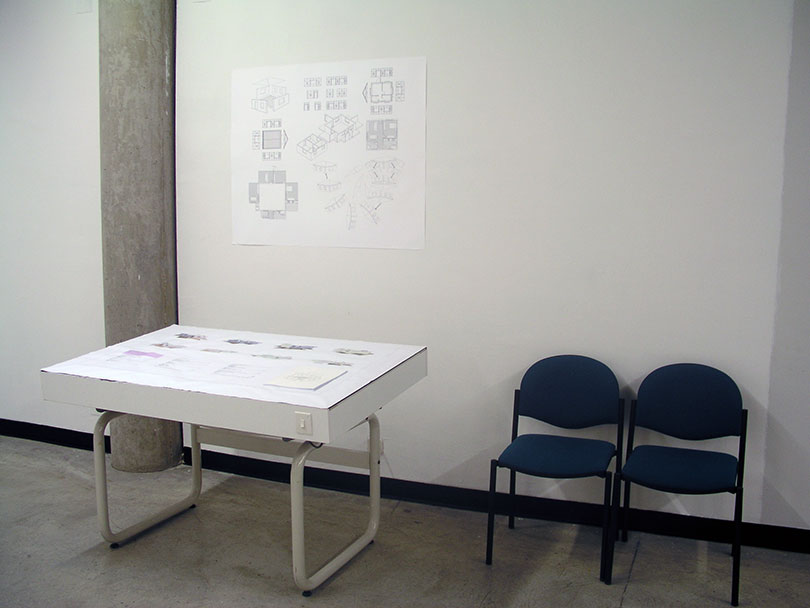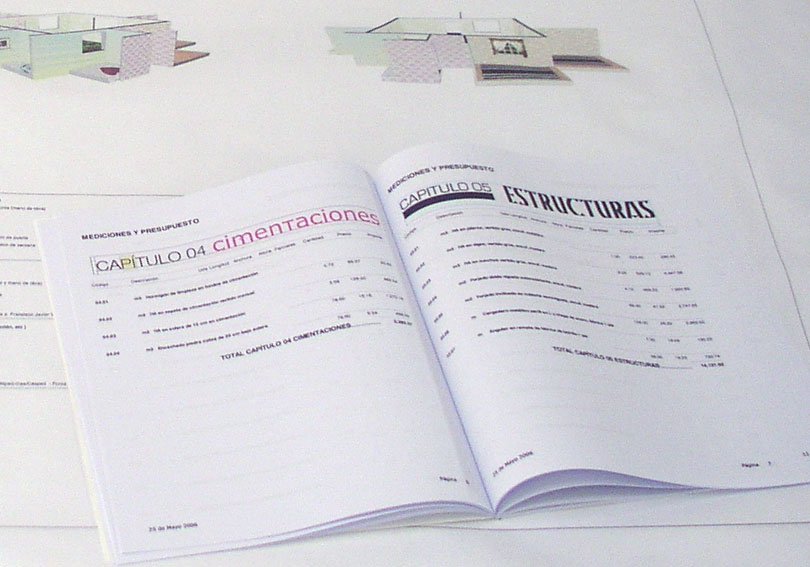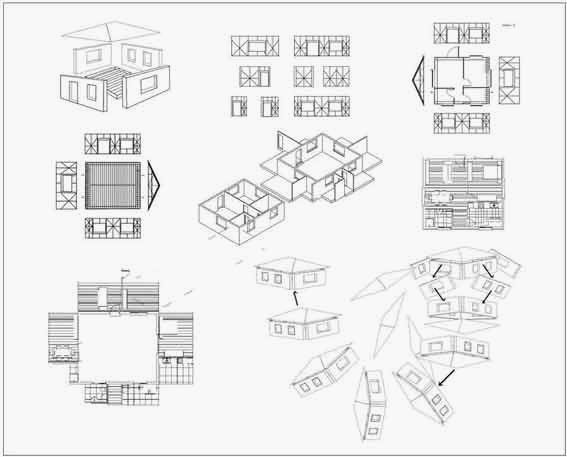| |
|
|
| |
|
|
| |
|
|
| El arte no ofrece respuestas, plantea preguntas |
| |
Isidoro Valcárcel Medina |
|
[ES] El título del proyecto, es la pregunta que lo articula: ¿Cuanto costaría dar la vuelta a una casa? poner la al revés, invertirla, detalle por detalle, viga por viga y dar la vuelta a nuestra realidad más cotidiana. Utilizar el programa de cálculos y presupuesto de construcción Presto* averiguando la viabilidad de un proyecto, tanto constructivo como económico y aplicarle una función de dar la vuelta a todos los detalles de una casa, para averiguar su coste, es someter el mismo programa a un proceso inverso, haciendo un proyecto constructivamente absurdo y no rentable, quitando utilidad y funcionalidad tanto al programa en sí como de la casa, como hábitat. Someter la idea de hábitat, y el propio programa de cálculos de construcción es utilizar el propio medio restándole su funcionalidad para convertirlo en discurso estético. Hacer la casa inhabitable para hablar del propio habitar. Dar la vuelta a una casa elimina su funcionalidad (en cuanto hogar) para convertirlo en un hecho simbólico sobre el hábitat contemporáneo.
* Presto es un programa informático para arquitectura, de presupuestos, mediciones, tiempos, CAD, seguridad y salud, medioambiente, seguimiento de compras, calidad y control de costes para edificación y obra civil más difundido en países de habla hispana. En resumen; precio, tiempo y viabilidad.
|
| |
|
|
|
| |
|
|
Arte y arquitectura
La transición de una instalación efímera a una construcción permanente es fluida: la diferencia entre hacer estructuras para un uso público y construir una casa es pequeña. Ambas actividades están relacionados con el espacio y la psicología de su uso. La "casa" representa una necesidad básica de refugio. Nuestro hogar es una combinación de necesidad existencial, sueño personal, rutina diaria y universo privado.Dormimos, comemos, realizamos actividades intimas y trabajamos en casa. Su tamaño, función y carga simbólica la convierten en un tema deseable tanto para arquitectos como para artistas.La frontera entre arte y arquitectura comienza a desdibujarse en la medida en que ambas disciplinas se inspiran en la personalidad y las necesidades de los futuros habitantes y en la naturaleza del lugar.
Se evidencia el alto grado de performatividad, tanto en el proyecto como en gran parte de la propia producción artística. El hecho de ser uno mismo la primera espectadora de la propia obra. La frase que articula el proyecto es una incitación a revisar el Arte con Mayúscula, aunque haya intención en varios trabajos del dossier de hacer arte con minúsculas. La intención implícita del proyecto es de crear un espacio de experiencia común, aparte de generar un lugar de reflexión, y de ensueño. |
| |
|
|
| |
PIENSA EN LA CASA DOROTHY... (El Mago de Oz) |
| la casa que se despega de sus cimientos, la transición al mundo de los sueños. |
|
| |
|
|
Siempre hay una segunda lectura
La presentación del proyecto final de carrera, consiste en la exposición de la obra en su fase proyectual y como obra conceptual. Incluye todas las visualizaciones y cálculos necesarios para entender la pieza.
Parte central del proyecto, desde luego, es la resolución final (económica) de Presto. Cuanto vale dar la vuelta a una casa? "El arte no propone respuestas plantea preguntas", bien formulado, sería que la intención de la obra es la pregunta que genera esa respuesta. Lo importante de la obra no es lo incluye, sino lo excluye.
A partir de un interrogatorio, o en lo que en su momento empezó como una broma, disparó una serie de posibilidades, tanto discursivas/interpretativas como estéticas formales. Luego más tarde en la fase más proyectual apareció también las imposiciones. La primera, la parte de viabilidad del proyecto. Dar la vuelta literalmente a una vivienda, es decir, levantarlo por los cimientos y dar la vuelta a las paredes, el suelo y el techo, es casi imposible. Por otra parte, la económica, es un proyecto de mucha ambición. Eso lleva a lo incongruente en el enorme coste y despliegue de medios, con un presupuesto a medida. La realización depende del apoyo de una institución.
La producción cultural, en muchos casos, sino la mayoría, depende de la financiación. El artista se ve obligado a buscar sponsors para financiar su investigación y producción. Si tienes la financiación en forma de subvención de una institución pública o en forma de sponsor a través de una institución o empresa privada, puedes hacer arte, en el caso contrario, difícilmente puedes producir ni adquirir una espacio expositivo. Sino sólo queda la opción de que el artista costea su propia producción, y allí se convierte en su propia institución, se transforma en productor-empresario. En el caso de las instituciones públicas o estatales no existe duda que los fondos públicos siempre pueden ser usados para sostener o alimentar un arte oficial. Y los poderes estatales hábiles saben muy bien cómo pueden manipular a los artistas.
La obra cuestiona planteamientos respecto a la creación, la figura del artista y el arte contemporáneo. Destaca un particular interés por el impacto social de la arquitectura y el urbanismo, así como por la desestabilización del sistema artístico y de sus principales instituciones (crítica, mercado y museo). El arte sólo tiene sentido cuando nos hace concientes y responsables de nuestra realidad. A partir de una representación aceptada y unos códigos establecidos, descodificar y reconstruir una nueva representación del mundo donde las personas puedan identificarse, y entender su condición humana actual. |
| |
|
|
| |
|
|
| |
|
|
| |
|
|
| Art does not offer answers, art makes questions |
| |
Isidoro Valcárcel Medina |
|
[ENG] The title of the project is the question that articulates it: How much would it cost turn a house inside out? Turn it around, put it in reverse, detail by detail, beam by beam and turn our most everyday reality around. Using the calculation and construction budget program Presto to find out the cost of a project, both constructively and economically and apply it to turn around all the details of a house, to find out its cost, is submitting the same program to a inverse process, making a project constructively absurd and unprofitable, is removing its utility and functionality both of the program itself and the house, as habitat. To submit the idea of habitat, and the program of construction calculations itself is to use the medium by subtracting its functionality and turn it into an aesthetic discourse. Make the house uninhabitable to talk about own living. Turning a house inside out around eliminates its functionality (as a home) to turn it into a symbolic fact about contemporary habitat.
|
| |
|
|
| |
| |
|
|
|
|
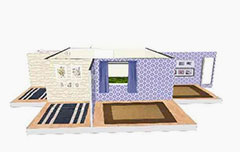 |
|
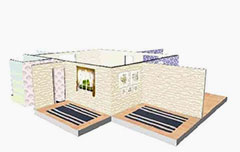 |
| |
|
|
|
|
|
|
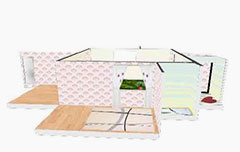 |
|
|
| |
|
|
|
|
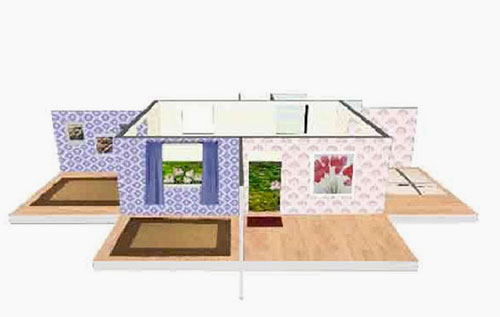 |
Simulación tridimensional
Impresión en papel
Soporte digital
|
|
| |
|
|
There is always a second reading
The presentation of the end of degree project, consists in the exhibition of the work in its project phase and as conceptual work. It includes all the visualizations and calculations necessary to understand the piece.
Central part of the project, of course, is the final (economic) resolution of Presto. How much does it cost to turn a house inside out? "Art does not offer answers, art propose questions", well formulated, would be that the intention of the work is the question that generates that answer. The important thing of the work is not what is included, but what is excluded.
From an interrogation, or in what at the time began as a joke, offered several possibilities, both discursive / interpretive and formal aesthetic. Later, in the most projectual phase, the impositions also appeared. The first, the cost of the project. To literally turn a house inside out, that is, to bring out by the foundations and to turn the walls, the floor and the roof around, is almost impossible. On the other hand, the economic part, is a project of great ambition. That leads to incongruity in the enormous cost and employment of resources, with a sequent budget. The realization depends on the support of an institution.
Cultural production, in many cases, if not most, depends on funding. The artist is forced to look for sponsors to finance the research and the production. If you have the funding in the form of a grant from a public institution or as a sponsor through a private institution or company, you can make art, otherwise you can hardly produce or acquire an exhibition space. But there is only the option that the artist costs his own production, and there he becomes his own institution, he becomes a producer-entrepreneur. In the case of public or state institutions there is no doubt that public funds can always be used to support or nurture an official art. And a skilful state powers know very well how to manipulate artists.
The work dispute questions about creation, the figure of the artist and contemporary art. With a particular interest for the social impact of architecture and urbanism, as well as the destabilization of the artistic system and its main institutions (criticism, market and museum). Art only makes sense when it makes us aware and responsible for our reality. Taking an accepted representation and established code, and decoding and reconstructing a new representation of the world where people can identify, and understand their current human condition. |
| |
|
|
|
| |
|
|
| |
THINK OF HOUSE OF DOROTHY ... (The Wizard of Oz) |
| The house that takes off from its foundations, the transition to the world of dreams. |
|
| |
|
|

